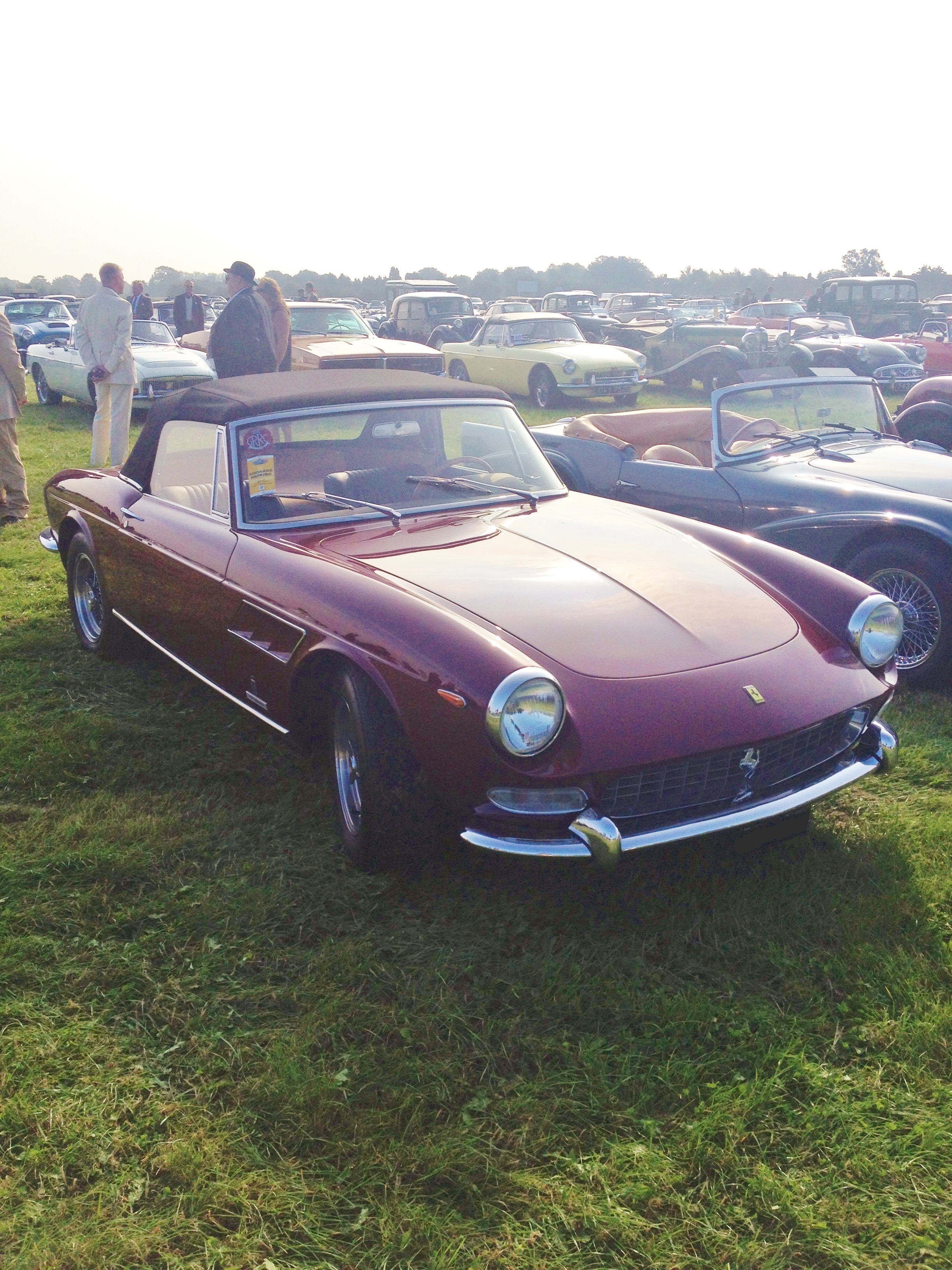-
Insurance
InsuranceAbout our productsLearn about insuringGet a quote Get current values, historical values, model history and more.
-
Valuation
ValuationHagerty valuation toolLook up a vehicle value Get current values, historical values, model history and more.
-
Events
EventsHagerty official eventsHagerty ClubhouseEvent calendar
-
Entertainment
EntertainmentMore to explore
- Portal login
1964 Ferrari 275 GTS
Base Spider 3.3 L
Vehicle values by condition
Fair
Condition 4
£751,000
#4 cars are daily drivers, with flaws visible to the naked eye. The chrome might have pitting or scratches, the windshield might be chipped.
Good
Condition 3
£988,000
#3 cars could possess some, but not all of the issues of a #4 car, but they will be balanced by other factors such as a fresh paint job or a new, correct interior.
Excellent
Condition 2
£1,100,000
#2 cars could win a local or regional show. They can be former #1 cars that have been driven or have aged. Seasoned observers will have to look closely for flaws.
Concours
Condition 1
£1,300,000
#1 vehicles are the best in the world. The visual image is of the best car, unmodified, in the right colours, driving onto the lawn at the finest concours.
Insurance premium for a
1964 Ferrari 275 GTS Base Spider 3286
valued at £988,000
£3693.85
/ year*
History of the 1964 - 1966 Ferrari 275 GTS

1964 - 1966 Ferrari 275 GTS
The Ferrari 275 is a front engine, rear wheel drive sports car that was produced between 1964 and 1968. The GTB (coupe) was designed by Scaglietti and the GTS (cabriolet) by Pininfarina. The 275 series replaced the Ferrari 250 range and was aimed at the sports/ grand touring market.
The Ferrari 275 was launched in 1964 at the Paris Auto Salon and was fitted with the 3,286 cc twin-valve SOHC Colombo V12 engine. Thanks to three Weber carburettors, the GTS generated 260 bhp, while the GTB delivered 275 bhp. If an optional 6-Weber setup was ordered, power rose to 300 bhp. The 275 used a tubular body construction and had independent suspension all round and a 5-speed transaxle at the rear.
The 275 GTB was much lighter than the 250 GT Lusso it replaced, and more aerodynamic. It featured a modified camshaft, which removed the low-speed stumble. In all, 474 275 GTB/2’s were built between 1964 and 1966 in three basic series. The first 250 cars were “short nose”, which tended to lift at speed. Later cars had a longer nose and smaller air intake, and the final version was fitted with a DOHC engine. Both steel and alloy bodies were offered for the 275 GTB/2 and both were raced.
Most desirable GTBs were the lightweight competition models, of which 14 were built in 1965, including three racers with GTO-style noses. They had dry-sump engines and alloy bodies with vents behind the rear wheels. A single 25-gallon fuel tank was replaced by two 12-gallon tanks and the rear window was enlarged. Valve seals were installed to reduce the exhaust smoke which had always characterized Ferrari V12s up to that point.
The Series II cars of 1966 united the engine and the rear-mounted transaxle through a rigid torque tube, eliminating the troublesome vibrations in the earlier cars. There were also 11 or 12 racing GTB/Cs, with thinner aluminium panels and plastic windows. One of these won the GT class at Le Mans in 1966, finishing 8th overall. Competition models were fitted with Borrani wire wheels and Dunlop racing tires, but these had so much grip they could break the spokes. These were the last competition Ferraris to be fitted with wire wheels.
The third series of 275 GTB – the GTB/4 was introduced at the Paris Salon in October 1966. It introduced DOHC heads and new motor produced 300 bhp, via six Weber DC40 17 carburettors. Top speed was now 165 mph, and 0-100 mph took only 15 second, easily revving up to 8,000 rpm. The frame and transmission had been reworked to stiffen the drive-train, and the aforementioned torque tube greatly reduced vibration, handling and noise. Ferraris now came equipped with Campagnolo alloy wheels, though some sources say Borrani wire wheels were still an option.
The Ferrari 275 GTB/4 looked similar to the original 275 GTB, though a bulge in the hood signified the DOHC engine. The twin cams enabled valves to be aligned perpendicularly to the camshaft, so the heads were more compact. The engine was now a dry-sump unit. Formula I cars had been using twin cams since the 1950s, but Enzo Ferrari never saw the need to complicate his street cars until Lamborghini challenged his philosophy.
There were no competition 275 GTB/4 models offered, but there were a few alloy bodies among the 280 built, and a number were raced by their owners.
Prices of 275 GTB/4s are slightly higher than the two-cam 275, and alloy bodied cars are three to four times more expensive. As always, detailed and complete provenance is essential, especially if racing was involved.
Alternative cars of the era were the preceding Ferrari 250 and the Ferrari 330. Alternatives from other manufacturers include the Lamborghini 350 GT, the Lamborghini Miura, the Maserati Ghibli and the Alfa Romeo TZ2.
Hagerty Newsletter
Get your weekly dose of car news from Hagerty UK in your inbox

ADVERTISEMENT